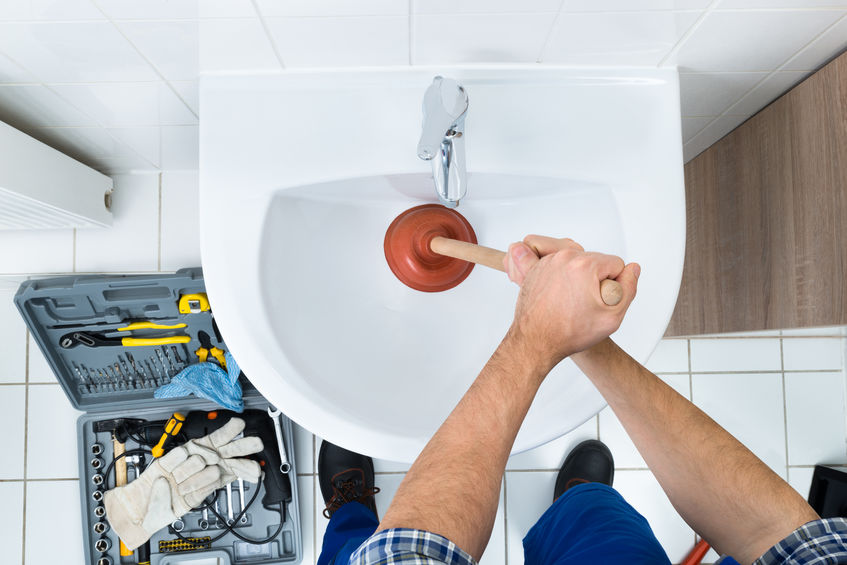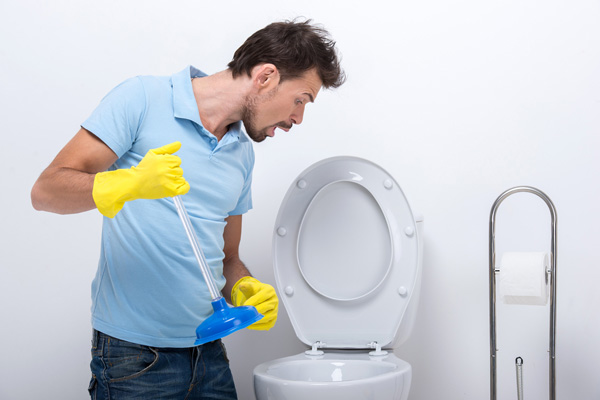Mastering Plungers and Drain Cleaner: Essential Tips
Mastering Plungers and Drain Cleaner: Essential Tips
Blog Article
Every person will have his or her own rationale when it comes to How to Unclog Your Sink with a Plunger.

Introduction
Correct maintenance of family drains is essential for protecting against blockages and ensuring smooth water circulation. One of the secret devices in every house owner's toolkit is the bettor, together with different drain cleaners made to tackle persistent clogs efficiently. This write-up explores exactly how to make use of bettors and drain cleaners successfully to keep your drains pipes moving freely.
Section 1: Understanding Plungers
Sorts of Plungers
There are numerous kinds of bettors offered, each created for various sorts of drains and blocks. One of the most usual types consist of mug plungers, flange bettors, and accordion bettors.
Just How Plungers Work
Plungers deal with the concept of developing pressure and suction to displace blockages. When effectively applied over a drain, they develop a vacuum cleaner that can take out particles or separate blockages.
Choosing the Right Bettor
Picking the right bettor depends on the type of drainpipe and the nature of the obstruction. Mug bettors are optimal for sinks and tubs, while flange plungers are much better fit for commodes due to their design.
Common Blunders with Bettors
Preventing these errors guarantees effective plunging: inappropriate seal around the drainpipe, insufficient pressure, and unclear surrounding particles.
Section 2: Making Use Of Plungers Successfully
Preparation
Prior to plunging, make sure the plunger covers the drainpipe completely and develops a tight seal. Clear any type of noticeable debris around the drainpipe opening.
Technique
Begin with mild plunging movements to construct suction. Increase stress progressively, using a consistent rhythm. Repeat as necessary up until the drainpipe gets rid of.
Troubleshooting Tips
If plunging doesn't function, try readjusting the seal, using oil jelly for a much better seal, or using a various type of bettor.
Section 3: Recognizing Drainpipe Cleansers
Types of Drainpipe Cleansers
Drain cleaners can be chemical or enzymatic. Chemical cleaners make use of solid chemicals to dissolve clogs, while chemical cleaners make use of natural enzymes to break down raw material.
Exactly How Drain Cleansers Work
Chemical cleansers respond with obstructions to liquify them, while enzymatic cleaners break down organic materials like hair and grease without harming pipes.
Safety Considerations
Always put on handwear covers and eye defense when making use of chemical drainpipe cleansers. Ensure ample ventilation and comply with producer directions thoroughly.
Eco-Friendly Alternatives
Consider making use of vinegar and baking soft drink or enzyme-based cleaners for environment-friendly options that are more secure for pipes and the environment.
Section 4: Making Use Of Drain Cleansers Successfully
Application Strategies
Put chemical cleansers straight right into the drainpipe opening. Permit them to work for the advised time before purging with hot water. Enzymatic cleansers need to rest over night.
Precautions
Prevent blending different kinds of cleansers, as this can create hazardous fumes. Never ever utilize chemical cleaners along with a plunger, as spilling can take place.
Taking Care Of Persistent Obstructions
For relentless clogs, consider utilizing a pipes serpent or calling an expert plumbing technician to stop damage to pipelines.
Verdict
In conclusion, understanding how to make use of bettors and drainpipe cleaners successfully is important for keeping healthy plumbing systems. By choosing the right tools and strategies, house owners can deal with minor blockages and stop major pipes issues down the line.
How to Use a Plunger to Unclog a Drain
The humble plunger is a simple yet effective tool for breaking clogs in sinks, tubs and toilets. This handy tool is easy to use. You can make the most of its power if you understand how it works. Ready to dive in? Here’s what you need to know.
Safety First!
Never use a plunger with drain chemicals. Water will splash as you work, and the chemicals can spatter, burning skin and eyes. It’s a good idea to use rubber gloves and wear safety goggles when you work on a clog.
Choose the Right Tool for the Job
Plungers come in two different styles. Sinks, bathtubs and showers require a cup plunger. Like its name suggests, the rubber end is shaped like a cup. Use a flange plunger on toilets. These plungers have a rubber funnel extending from the cup. A plunger needs to be big enough to cover the drain.
Ready, Set, Plunge!
Coat the rim: Coat the plunger rim with petroleum jelly. This helps make a better seal.
Block outlets: Hold a wet rag over nearby outlets such as the overflow vent or the drain in a second sink.
Release air: Insert the plunger at an angle into the water. Water will displace air in the cup. A water-filled cup is more forceful than one filled with air.
Keep the plunger upright: Hold the plunger perpendicular to the drain. Use fast, forceful strokes, but make the first stroke gentle. The first stroke can create a splash if the cup still contains air. Thrust the plunger 15 to 20 times.
Snap off the plunger: The final stroke should be a strong upward motion that ends when the plunger snaps off the drain.
Repeat the process: you may need to repeat this sequence several times. When the water drains away, your work is done. High-five! https://plumbernw.com/blog/how-to-use-a-plunger-to-unclog-a-drain/

Application Strategies
Put chemical cleansers straight right into the drainpipe opening. Permit them to work for the advised time before purging with hot water. Enzymatic cleansers need to rest over night.
Precautions
Prevent blending different kinds of cleansers, as this can create hazardous fumes. Never ever utilize chemical cleaners along with a plunger, as spilling can take place.
Taking Care Of Persistent Obstructions
For relentless clogs, consider utilizing a pipes serpent or calling an expert plumbing technician to stop damage to pipelines.
Verdict
In conclusion, understanding how to make use of bettors and drainpipe cleaners successfully is important for keeping healthy plumbing systems. By choosing the right tools and strategies, house owners can deal with minor blockages and stop major pipes issues down the line.
How to Use a Plunger to Unclog a Drain
The humble plunger is a simple yet effective tool for breaking clogs in sinks, tubs and toilets. This handy tool is easy to use. You can make the most of its power if you understand how it works. Ready to dive in? Here’s what you need to know.
Safety First!
Never use a plunger with drain chemicals. Water will splash as you work, and the chemicals can spatter, burning skin and eyes. It’s a good idea to use rubber gloves and wear safety goggles when you work on a clog.
Choose the Right Tool for the Job
Plungers come in two different styles. Sinks, bathtubs and showers require a cup plunger. Like its name suggests, the rubber end is shaped like a cup. Use a flange plunger on toilets. These plungers have a rubber funnel extending from the cup. A plunger needs to be big enough to cover the drain.
Ready, Set, Plunge!
Coat the rim: Coat the plunger rim with petroleum jelly. This helps make a better seal. Block outlets: Hold a wet rag over nearby outlets such as the overflow vent or the drain in a second sink. Release air: Insert the plunger at an angle into the water. Water will displace air in the cup. A water-filled cup is more forceful than one filled with air. Keep the plunger upright: Hold the plunger perpendicular to the drain. Use fast, forceful strokes, but make the first stroke gentle. The first stroke can create a splash if the cup still contains air. Thrust the plunger 15 to 20 times. Snap off the plunger: The final stroke should be a strong upward motion that ends when the plunger snaps off the drain. Repeat the process: you may need to repeat this sequence several times. When the water drains away, your work is done. High-five! https://plumbernw.com/blog/how-to-use-a-plunger-to-unclog-a-drain/

I found that blog posting on How to Use a Plunger to Unclog a Toilet or Drain when exploring the internet. So long as you appreciated our blog posting please do not forget to share it. I value reading our article about A Guide to Plungers (and How to Use Them).
Call Today Report this page